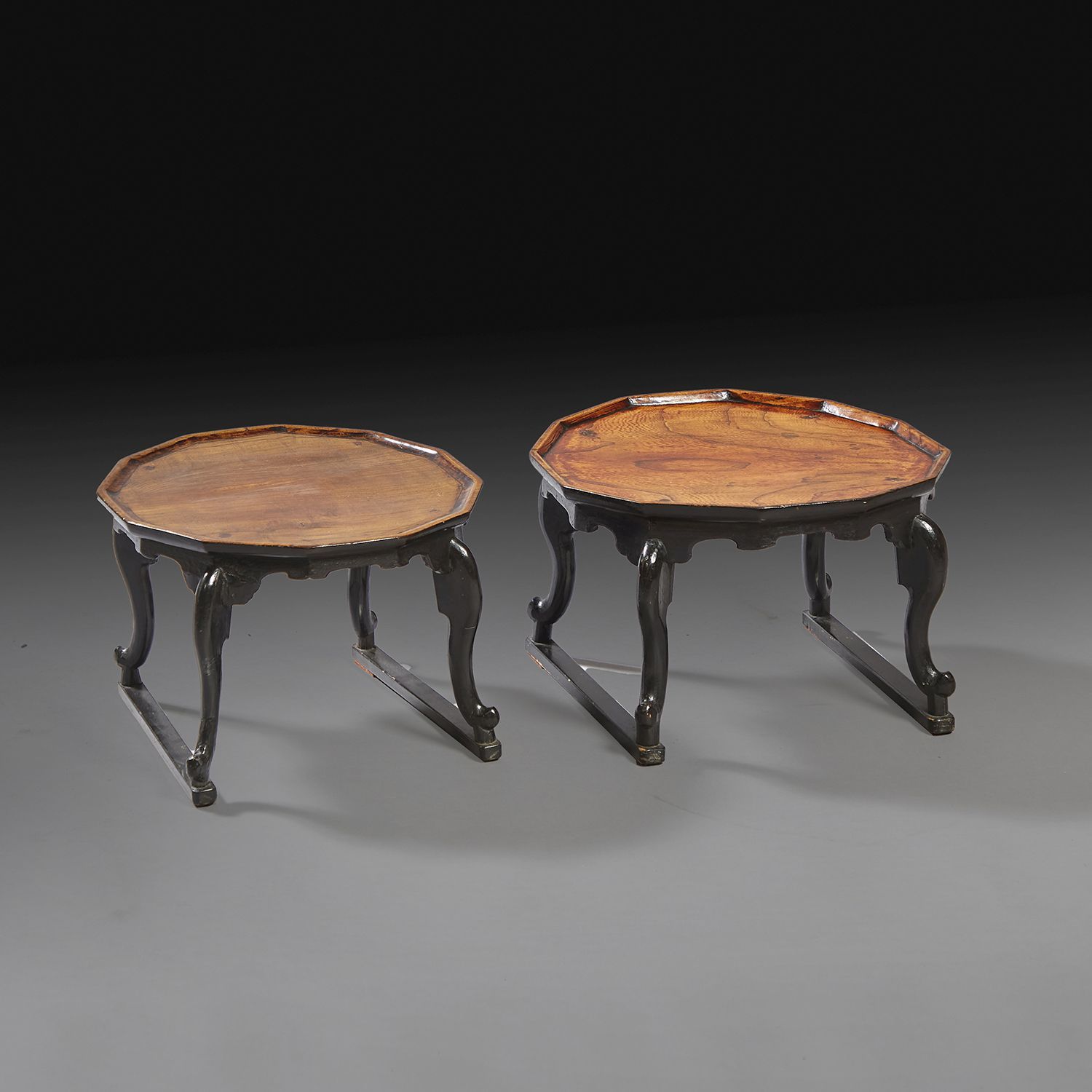Description
SUITE OF TWO 'SOBAN' TABLES for the presentation of food, in natural wood, the four curved legs and the black lacquered belt, the polygonal top. Korea, late 19th century. - TWO WOODEN DINING SOBAN TABLES, KOREA, LATE 19TH CENTURY. HEIGHT. 28 CM (11 IN.) - DIAM. (TOP) 43 CM (16 15/16 IN.) - - NOTE Soban are small tray-type tables, usually made of wood, used in Korea for carrying food and as individual tables for meals. They are usually made of walnut, pine or ginkgo wood, often from the local carpenter's area. In addition to being used for meals, sobans were also used to carry various objects, as writing desks and as small altars for prayers or for burning incense. Sobans are generally quite small in size, due to the historical custom of each family member and guest having their own individual table. The standard dimensions are about 30 CM by 50 CM, with legs about 30 CM high. The table is placed on the floor and used in a sitting position. Sobans are generally classified in different ways. Commonly, they are designated by their region of origin. Another standard system classifies them according to the shape and number of legs, the most popular being the hojokban ("tiger's paw"). The shape of the table surface (rectangular, circular, octagonal, etc.) is also used to differentiate them.
360
SUITE OF TWO 'SOBAN' TABLES for the presentation of food, in natural wood, the four curved legs and the black lacquered belt, the polygonal top. Korea, late 19th century. - TWO WOODEN DINING SOBAN TABLES, KOREA, LATE 19TH CENTURY. HEIGHT. 28 CM (11 IN.) - DIAM. (TOP) 43 CM (16 15/16 IN.) - - NOTE Soban are small tray-type tables, usually made of wood, used in Korea for carrying food and as individual tables for meals. They are usually made of walnut, pine or ginkgo wood, often from the local carpenter's area. In addition to being used for meals, sobans were also used to carry various objects, as writing desks and as small altars for prayers or for burning incense. Sobans are generally quite small in size, due to the historical custom of each family member and guest having their own individual table. The standard dimensions are about 30 CM by 50 CM, with legs about 30 CM high. The table is placed on the floor and used in a sitting position. Sobans are generally classified in different ways. Commonly, they are designated by their region of origin. Another standard system classifies them according to the shape and number of legs, the most popular being the hojokban ("tiger's paw"). The shape of the table surface (rectangular, circular, octagonal, etc.) is also used to differentiate them.
